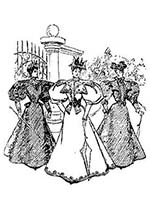1. The term "Jim Crow" originally referred to:
b. A popular burlesque song and theatrical dance number
 White actor, singer, and dancer, Thomas D. Rice, wrote and performed "Jim Crow" (sometimes called "Jump Jim Crow" because of the first line of the chorus) in 1829 or 1830. To perform the song, Rice dressed in tattered rags and frolicked comically to impersonate a very low caricature of a black man. His performances became an overnight sensation among white audiences, and he performed all over the country. He then took his act to Britain and France, where it became an even bigger hit.
White actor, singer, and dancer, Thomas D. Rice, wrote and performed "Jim Crow" (sometimes called "Jump Jim Crow" because of the first line of the chorus) in 1829 or 1830. To perform the song, Rice dressed in tattered rags and frolicked comically to impersonate a very low caricature of a black man. His performances became an overnight sensation among white audiences, and he performed all over the country. He then took his act to Britain and France, where it became an even bigger hit.
One dismayed English drama critic in the London Satirist, however, wrote: "Talent is of no country, neither is folly; and were 'Jim Crow' of English creation, we should have assuredly dealt as severely with it as we have now done with the bantling of the new world--perhaps more so, for we would have strangled it in its birth to prevent it begetting any more of its own species to offend the world's eye with their repulsive deformities. The circumstance of its being an exotic, the production of the pestilential marshes of backwood ignorance, has had no effect with us in giving our opinion. There is no concealing the fact, that Jim Crow owes its temporary triumph in this country to one of those lapses of human nature which sometimes occurs, when the senses run riot, and a sort of mental saturnalia takes place." Quoted in "Jim Crowism," Spirit of the Times (New York), February 4, 1837.
2. "Jim Crow cars" were separate railway passenger cars in which blacks were forced to travel, instead of in the passenger cars in which whites took their seats. The term "Jim Crow cars" first came into use:
a. In the mid-1830s, in Massachusetts and Connecticut
 Segregated public transportation began in the North before the Civil War. In many parts of the South, a black could not travel at all, unless he or she was accompanying (or accompanied by) a white, or carrying a pass from a white person.
Segregated public transportation began in the North before the Civil War. In many parts of the South, a black could not travel at all, unless he or she was accompanying (or accompanied by) a white, or carrying a pass from a white person.
The inconsistencies themselves bred conflict. One Massachusetts newspaper editor wrote, "South of the Potomac, slaves ride inside of stage-coaches with their masters and mistresses—north of the Potomac they must travel on foot, in their own hired vehicles, or in the 'Jim Crow' car. … What a black man is, depends on where he is. He has no nature of his own; that depends upon his location. Moreover the contradictions that appertain to him, produce corresponding contradictions in the white man. … Seriously, very seriously—do not the incongruities, the strange anomalies, in the condition of the coloured race, clearly show there is terrible wrong somewhere? … The confusion of tongues is terrible; the confusion of ideas is worse." From "Incongruities of Slavery," The Friend, March 26, 1842, quoting the [Worcester] Massachusetts Spy.
3. Among the very first deliberate African American challengers to Jim Crow practices in public transportation was:
b. Frederick Douglass, who refused, in 1841, to give up the first-class seat on the Eastern Railroad he took when he boarded the train at Newburyport, MA, and move to the train's Jim Crow car
 Douglass may not have been the very first, but he appears to have been one of the first. African Americans in New England, beginning in late 1839, along with white abolitionists, with some successes, deliberately challenged extra-legal but fairly common Jim Crow accommodations on railroads, on stagecoaches, in churches ("Negro pews"), and in schools. The persistence of Jim Crow practices in the North, however, gave Southern slave-holding whites the opportunity to reproach even abolitionist Northern whites for "not treating their free blacks better."
Douglass may not have been the very first, but he appears to have been one of the first. African Americans in New England, beginning in late 1839, along with white abolitionists, with some successes, deliberately challenged extra-legal but fairly common Jim Crow accommodations on railroads, on stagecoaches, in churches ("Negro pews"), and in schools. The persistence of Jim Crow practices in the North, however, gave Southern slave-holding whites the opportunity to reproach even abolitionist Northern whites for "not treating their free blacks better."
4. After the Civil War, the practice of formally segregating whites and blacks working in Federal Government offices was instituted during the administration of which U.S. President?
c. Woodrow Wilson
 Woodrow Wilson, who had been born in Virginia, soon after he took office in 1913, began a government-wide segregation of blacks and whites in Federal workplaces, restrooms, and lunchrooms. The policy appears to have been instituted after Wilson's Georgia-born wife Ellen visited the Bureau of Printing and Engraving in Washington and "saw white and negro women working side by side." Wilson's Secretary of the Treasury, William McAdoo (also Georgia-born, and soon to be the Wilsons' son-in-law) took the hint. Shortly thereafter, Assistant Secretary of the Treasury John Skelton Williams issued an order segregating the races in the Bureau. A Washington-wide order, covering all Government offices, followed, and soon all Federal offices everywhere in the country were covered by the same order.
Woodrow Wilson, who had been born in Virginia, soon after he took office in 1913, began a government-wide segregation of blacks and whites in Federal workplaces, restrooms, and lunchrooms. The policy appears to have been instituted after Wilson's Georgia-born wife Ellen visited the Bureau of Printing and Engraving in Washington and "saw white and negro women working side by side." Wilson's Secretary of the Treasury, William McAdoo (also Georgia-born, and soon to be the Wilsons' son-in-law) took the hint. Shortly thereafter, Assistant Secretary of the Treasury John Skelton Williams issued an order segregating the races in the Bureau. A Washington-wide order, covering all Government offices, followed, and soon all Federal offices everywhere in the country were covered by the same order.
 White actor, singer, and dancer, Thomas D. Rice, wrote and performed "Jim Crow" (sometimes called "Jump Jim Crow" because of the first line of the chorus) in 1829 or 1830. To perform the song, Rice dressed in tattered rags and frolicked comically to impersonate a very low caricature of a black man. His performances became an overnight sensation among white audiences, and he performed all over the country. He then took his act to Britain and France, where it became an even bigger hit.
White actor, singer, and dancer, Thomas D. Rice, wrote and performed "Jim Crow" (sometimes called "Jump Jim Crow" because of the first line of the chorus) in 1829 or 1830. To perform the song, Rice dressed in tattered rags and frolicked comically to impersonate a very low caricature of a black man. His performances became an overnight sensation among white audiences, and he performed all over the country. He then took his act to Britain and France, where it became an even bigger hit. Segregated public transportation began in the North before the Civil War. In many parts of the South, a black could not travel at all, unless he or she was accompanying (or accompanied by) a white, or carrying a pass from a white person.
Segregated public transportation began in the North before the Civil War. In many parts of the South, a black could not travel at all, unless he or she was accompanying (or accompanied by) a white, or carrying a pass from a white person. Douglass may not have been the very first, but he appears to have been one of the first. African Americans in New England, beginning in late 1839, along with white abolitionists, with some successes, deliberately challenged extra-legal but fairly common Jim Crow accommodations on railroads, on stagecoaches, in churches ("Negro pews"), and in schools. The persistence of Jim Crow practices in the North, however, gave Southern slave-holding whites the opportunity to reproach even abolitionist Northern whites for "not treating their free blacks better."
Douglass may not have been the very first, but he appears to have been one of the first. African Americans in New England, beginning in late 1839, along with white abolitionists, with some successes, deliberately challenged extra-legal but fairly common Jim Crow accommodations on railroads, on stagecoaches, in churches ("Negro pews"), and in schools. The persistence of Jim Crow practices in the North, however, gave Southern slave-holding whites the opportunity to reproach even abolitionist Northern whites for "not treating their free blacks better." Woodrow Wilson, who had been born in Virginia, soon after he took office in 1913, began a government-wide segregation of blacks and whites in Federal workplaces, restrooms, and lunchrooms. The policy appears to have been instituted after Wilson's Georgia-born wife Ellen visited the Bureau of Printing and Engraving in Washington and "saw white and negro women working side by side." Wilson's Secretary of the Treasury, William McAdoo (also Georgia-born, and soon to be the Wilsons' son-in-law) took the hint. Shortly thereafter, Assistant Secretary of the Treasury John Skelton Williams issued an order segregating the races in the Bureau. A Washington-wide order, covering all Government offices, followed, and soon all Federal offices everywhere in the country were covered by the same order.
Woodrow Wilson, who had been born in Virginia, soon after he took office in 1913, began a government-wide segregation of blacks and whites in Federal workplaces, restrooms, and lunchrooms. The policy appears to have been instituted after Wilson's Georgia-born wife Ellen visited the Bureau of Printing and Engraving in Washington and "saw white and negro women working side by side." Wilson's Secretary of the Treasury, William McAdoo (also Georgia-born, and soon to be the Wilsons' son-in-law) took the hint. Shortly thereafter, Assistant Secretary of the Treasury John Skelton Williams issued an order segregating the races in the Bureau. A Washington-wide order, covering all Government offices, followed, and soon all Federal offices everywhere in the country were covered by the same order.
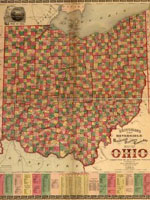
 From the late 1880s to around 1940, Yiddish-language theatre found a home in New York City—as did the wave of Jewish immigrants who brought the performance form to the U.S. Fleeing persecution in Russia, these immigrants, whether they chose to be performing artists or audience members, developed a unique theatre culture. Unlike the short variety acts of contemporary vaudeville, Yiddish theatre presented full-evening-length plays, accompanied by music or broken up with song-and-dance numbers. Plays adapted popular works by authors like Shakespeare and Anton Chekhov, drew from folklore and folk customs, and/or commented on recent events in the U.S. and abroad. Some addressed issues of assimilation, such as intermarriage and generational gaps, while others praised the virtues of the immigrants' adopted country—as did the musicals mentioned above.
From the late 1880s to around 1940, Yiddish-language theatre found a home in New York City—as did the wave of Jewish immigrants who brought the performance form to the U.S. Fleeing persecution in Russia, these immigrants, whether they chose to be performing artists or audience members, developed a unique theatre culture. Unlike the short variety acts of contemporary vaudeville, Yiddish theatre presented full-evening-length plays, accompanied by music or broken up with song-and-dance numbers. Plays adapted popular works by authors like Shakespeare and Anton Chekhov, drew from folklore and folk customs, and/or commented on recent events in the U.S. and abroad. Some addressed issues of assimilation, such as intermarriage and generational gaps, while others praised the virtues of the immigrants' adopted country—as did the musicals mentioned above. In 1852, the Tong Hook Tong Dramatic Company arrived in California, following the stream of Chinese immigrants who had come to the state with the 1848 gold rush. Greeted warmly by immigrant audiences, they accepted a contract to perform in New York City. In New York, they discovered the contract was a scam, and secured their own theatre space, performing for New Yorkers independently. Chinese opera bears little resemblance to European opera, and even less to the "Oriental" image of China then popular on the mainstream stage. Confused by what they were seeing, New Yorkers rejected genuine Chinese theatre that did not match up with contemporary media stereotypes.
In 1852, the Tong Hook Tong Dramatic Company arrived in California, following the stream of Chinese immigrants who had come to the state with the 1848 gold rush. Greeted warmly by immigrant audiences, they accepted a contract to perform in New York City. In New York, they discovered the contract was a scam, and secured their own theatre space, performing for New Yorkers independently. Chinese opera bears little resemblance to European opera, and even less to the "Oriental" image of China then popular on the mainstream stage. Confused by what they were seeing, New Yorkers rejected genuine Chinese theatre that did not match up with contemporary media stereotypes. In 1965, Luis Valdez, the son of Chicano migrant farm workers, founded the theatrical company El Teatro Campesino. El Teatro Campesino took theatrical performances—often without props, sets, or written scripts—directly to the camps of migrant farm workers. In its performances, the company sought to inspire farm workers to form a farm workers' union, but it also performed pieces based on Mexican popular theatre: corridas (dramatized ballads), peladitos (comic skits with an underdog protagonist), and religious pageants.
In 1965, Luis Valdez, the son of Chicano migrant farm workers, founded the theatrical company El Teatro Campesino. El Teatro Campesino took theatrical performances—often without props, sets, or written scripts—directly to the camps of migrant farm workers. In its performances, the company sought to inspire farm workers to form a farm workers' union, but it also performed pieces based on Mexican popular theatre: corridas (dramatized ballads), peladitos (comic skits with an underdog protagonist), and religious pageants. Prior to the Great Migration of the early 20th century, when African Americans came north in search of a better life, major record companies released African American music, but only as performed by white performers. Sensing the potential for a new market, the companies began to record African American performers and release their music on special labels targeted at African American audiences. Called "race records," these records were later marketed to white audiences as well. African Americans also established their own companies to distribute records—the first African American owned label, Black Swan, was established in 1921. Many styles of music associated with race records would later be recategorized as "rhythm and blues."
Prior to the Great Migration of the early 20th century, when African Americans came north in search of a better life, major record companies released African American music, but only as performed by white performers. Sensing the potential for a new market, the companies began to record African American performers and release their music on special labels targeted at African American audiences. Called "race records," these records were later marketed to white audiences as well. African Americans also established their own companies to distribute records—the first African American owned label, Black Swan, was established in 1921. Many styles of music associated with race records would later be recategorized as "rhythm and blues."
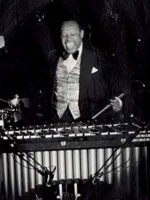
 False. Advertising executive Rosser Reeves had previously created the "melts in your mouth, not in your hands" campaign for M&Ms. The campaign he planned for Eisenhower—20-second spots designed to run before or after popular television shows like I Love Lucy—featured "normal Joe" citizens asking Eisenhower questions about taxes, foreign policy, and other issues. Eisenhower answered in a brief, blunt, homey fashion, with the format giving the campaign its name: "Eisenhower Answers America." Prior to this campaign, presidential candidates had brushed off the potential of television advertising; following it, ads became an accepted and increasingly central aspect of campaigning.
False. Advertising executive Rosser Reeves had previously created the "melts in your mouth, not in your hands" campaign for M&Ms. The campaign he planned for Eisenhower—20-second spots designed to run before or after popular television shows like I Love Lucy—featured "normal Joe" citizens asking Eisenhower questions about taxes, foreign policy, and other issues. Eisenhower answered in a brief, blunt, homey fashion, with the format giving the campaign its name: "Eisenhower Answers America." Prior to this campaign, presidential candidates had brushed off the potential of television advertising; following it, ads became an accepted and increasingly central aspect of campaigning. True. JFK's 1960 campaign for the presidency, run by two different advertising agencies, included a multitude of television advertisements and a dizzying array of techniques and appeals. Several of the ads spoke out to specific demographics—including a spot in which Jackie Kennedy, speaking in uneven Spanish, assured voters that, in the face of the danger of communism, "Mi esposo siempre vigilará los intereses de todos los sectores de nuestra sociedad que necesitan la protección de un gobierno humanitario" (or, "My husband will always watch over the interests of all sectors of our society who are in need of the protection of a humanitarian government"). Other ads spoke to the African American community, assuring the public that Kennedy's Catholicism would not compromise his presidential duties.
True. JFK's 1960 campaign for the presidency, run by two different advertising agencies, included a multitude of television advertisements and a dizzying array of techniques and appeals. Several of the ads spoke out to specific demographics—including a spot in which Jackie Kennedy, speaking in uneven Spanish, assured voters that, in the face of the danger of communism, "Mi esposo siempre vigilará los intereses de todos los sectores de nuestra sociedad que necesitan la protección de un gobierno humanitario" (or, "My husband will always watch over the interests of all sectors of our society who are in need of the protection of a humanitarian government"). Other ads spoke to the African American community, assuring the public that Kennedy's Catholicism would not compromise his presidential duties.  False. Nixon's 1972 campaign for reelection cast him as a man of "compassion, courage, and conscience," concerned about many issues, including environmentalism and international diplomacy, as well as withdrawing from Vietnam. President Nixon, one ad declared, was willing to press for change, because "without change there can be no progress." The ads crafted the argument that Nixon, far from being cold and unapproachable, was personable and personally interested in a global push for peace and wellbeing nationally and internationally. Nixon won the campaign against South Dakota Senator George McGovern by a landslide.
False. Nixon's 1972 campaign for reelection cast him as a man of "compassion, courage, and conscience," concerned about many issues, including environmentalism and international diplomacy, as well as withdrawing from Vietnam. President Nixon, one ad declared, was willing to press for change, because "without change there can be no progress." The ads crafted the argument that Nixon, far from being cold and unapproachable, was personable and personally interested in a global push for peace and wellbeing nationally and internationally. Nixon won the campaign against South Dakota Senator George McGovern by a landslide. False. Though most of Ronald Reagan's ads stressed the economic wellbeing of the U.S., using montages of small-town Americans engaged in rituals such as weddings and buying new homes, one stuck out. The unusual ad showed a bear lurking in the woods; the accompanying narration suggested that the bear might or might not exist and might or might not be dangerous, but "since no one can really be sure who's right, isn't it smart to be as strong as the bear? If there is a bear?" Though the ad never explicitly states what the bear stands for, the advertisement's creators intended it to symbolize the Soviet Union. The ad's watchers, however, took it as commenting on any number of issues, including gun control and the need for change in environmental laws. Despite its ambiguity, the ad gained attention and later served as inspiration for an ad in George W. Bush's 2004 reelection campaign.
False. Though most of Ronald Reagan's ads stressed the economic wellbeing of the U.S., using montages of small-town Americans engaged in rituals such as weddings and buying new homes, one stuck out. The unusual ad showed a bear lurking in the woods; the accompanying narration suggested that the bear might or might not exist and might or might not be dangerous, but "since no one can really be sure who's right, isn't it smart to be as strong as the bear? If there is a bear?" Though the ad never explicitly states what the bear stands for, the advertisement's creators intended it to symbolize the Soviet Union. The ad's watchers, however, took it as commenting on any number of issues, including gun control and the need for change in environmental laws. Despite its ambiguity, the ad gained attention and later served as inspiration for an ad in George W. Bush's 2004 reelection campaign. To watch all of the ads mentioned in this quiz, check out the Museum of the Moving Image's website
To watch all of the ads mentioned in this quiz, check out the Museum of the Moving Image's website 
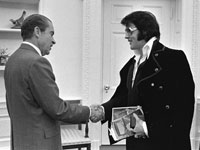



 For more on major U.S. Supreme Court cases, try a search in our
For more on major U.S. Supreme Court cases, try a search in our 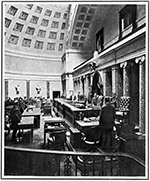

 1941: Pan American Airways began in 1927 with a single engine aircraft and a single route between Key West and Havana. By 1941, the airline flew to 55 different countries, between North and South America, Europe, Asia, and Australia. Airline ads in the late 1930s advertised air travel similar to train travel, with sleeping berths and dining cars. When the U.S. entered World War II, the world’s only aircraft that could carry payloads across an ocean were nine Pan Am Boeing 314 flying Clippers, and three that Pan Am had sold to Britain. The U.S. government took over all of Pan Am’s over-ocean aircraft, crews, and operations. Pan American airplanes were used in overt operations by the War Department, and in 1942, 1,445 war planes were delivered to the British army. [1]
1941: Pan American Airways began in 1927 with a single engine aircraft and a single route between Key West and Havana. By 1941, the airline flew to 55 different countries, between North and South America, Europe, Asia, and Australia. Airline ads in the late 1930s advertised air travel similar to train travel, with sleeping berths and dining cars. When the U.S. entered World War II, the world’s only aircraft that could carry payloads across an ocean were nine Pan Am Boeing 314 flying Clippers, and three that Pan Am had sold to Britain. The U.S. government took over all of Pan Am’s over-ocean aircraft, crews, and operations. Pan American airplanes were used in overt operations by the War Department, and in 1942, 1,445 war planes were delivered to the British army. [1] 1938: Hormel developed canned ham in 1926, and eleven years later produced the first canned meat product that did not require refrigeration, a distinctive chopped ham and pork shoulder mixture, marketed as “spiced ham.” A major advertising campaign started in mid-1937, promoting the product as “miracle meat” and “anytime meat.” SPAM proved effective for the military and because it wasn’t rationed like beef was, it became a major staple for American families during the war. [2]
1938: Hormel developed canned ham in 1926, and eleven years later produced the first canned meat product that did not require refrigeration, a distinctive chopped ham and pork shoulder mixture, marketed as “spiced ham.” A major advertising campaign started in mid-1937, promoting the product as “miracle meat” and “anytime meat.” SPAM proved effective for the military and because it wasn’t rationed like beef was, it became a major staple for American families during the war. [2] 1956: While passenger service on the Union Pacific Railroad started in 1866, early accommodations were rough and often uncomfortable. The 1890 Overland Limited, a luxury train, ran between Omaha and San Francisco, and by 1921, passenger revenues reached an all-time high. As the Twenties progressed, the automobile became more accessible and necessary, and Union Pacific took some drastic marketing steps to increase business. Luxurious Steamliner passenger trains began operating in the 1930s with opulent furnishings, impeccable service, and total comfort, developing over the next decades with sleeping cars, coaches, diners and lounges, dome coaches, and dome diners, unique to Union Pacific. [3]
1956: While passenger service on the Union Pacific Railroad started in 1866, early accommodations were rough and often uncomfortable. The 1890 Overland Limited, a luxury train, ran between Omaha and San Francisco, and by 1921, passenger revenues reached an all-time high. As the Twenties progressed, the automobile became more accessible and necessary, and Union Pacific took some drastic marketing steps to increase business. Luxurious Steamliner passenger trains began operating in the 1930s with opulent furnishings, impeccable service, and total comfort, developing over the next decades with sleeping cars, coaches, diners and lounges, dome coaches, and dome diners, unique to Union Pacific. [3] 1959: Pharmacist Dr. John Stith Pemberton produced the syrup for Coca Cola in Atlanta in 1886. Marketing for the drink began immediately with coupons and souvenir fans, calendars, clocks, urns, and other novelties depicting the trademark. Coca Cola’s first advertisement appeared in 1895, featuring Boston actress Hilda Clark. By World War II, Coke was bottled in 44 countries on both sides of the conflict. From the mid-1940s through 1960, the number of countries with bottling operations nearly doubled. In 1955, the company introduced varying sizes of bottles. Metal cans were not available until after 1960. Campaign slogans include the 1929 “Pause that Refreshes,” “It’s the Refreshing Thing to Do” in 1936, and 1944’s “Global High Sign.” The 1950s produced “Sign of Good Taste,” “Be Really Refreshed,” and “Go Better Refreshed.” [3]
1959: Pharmacist Dr. John Stith Pemberton produced the syrup for Coca Cola in Atlanta in 1886. Marketing for the drink began immediately with coupons and souvenir fans, calendars, clocks, urns, and other novelties depicting the trademark. Coca Cola’s first advertisement appeared in 1895, featuring Boston actress Hilda Clark. By World War II, Coke was bottled in 44 countries on both sides of the conflict. From the mid-1940s through 1960, the number of countries with bottling operations nearly doubled. In 1955, the company introduced varying sizes of bottles. Metal cans were not available until after 1960. Campaign slogans include the 1929 “Pause that Refreshes,” “It’s the Refreshing Thing to Do” in 1936, and 1944’s “Global High Sign.” The 1950s produced “Sign of Good Taste,” “Be Really Refreshed,” and “Go Better Refreshed.” [3] 1969: Panasonic was founded in 1918, selling duplex lamp sockets in Japan, expanding rapidly to other areas. By 1961 the company began producing televisions for an American market. In 1962, television started transmitting via satellite, allowing for real-time images changing the industry. In the mid-1960s, television manufacturers competed to make the smallest set.
1969: Panasonic was founded in 1918, selling duplex lamp sockets in Japan, expanding rapidly to other areas. By 1961 the company began producing televisions for an American market. In 1962, television started transmitting via satellite, allowing for real-time images changing the industry. In the mid-1960s, television manufacturers competed to make the smallest set. 1932: Parents started giving children pacifiers around 1800. Concern for the way thumbsucking and other such activities impacted physical and social development prompted adults to use such contraptions as the Baby Alice Thumb Guard.
1932: Parents started giving children pacifiers around 1800. Concern for the way thumbsucking and other such activities impacted physical and social development prompted adults to use such contraptions as the Baby Alice Thumb Guard.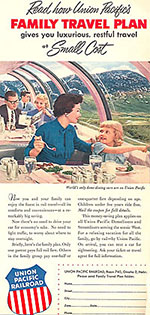
 Rubella
Rubella Diphtheria
Diphtheria  Smallpox
Smallpox  Polio
Polio The Centers for Disease Control and Prevention website provides resources on (largely present-day) health and health practices, but its
The Centers for Disease Control and Prevention website provides resources on (largely present-day) health and health practices, but its 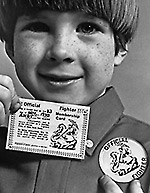
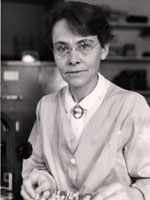




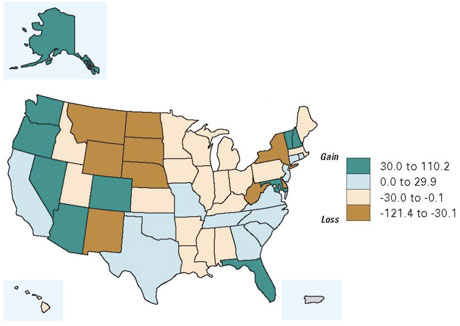

 1915
1915 1925
1925 1917 (Note the military accents.)
1917 (Note the military accents.) 1905.
1905. 1935.
1935. 1910.
1910. 1940.
1940. 1895.
1895. 1955.
1955. 1960.
1960.